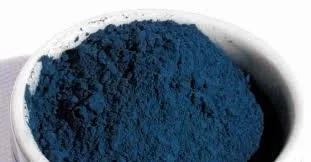China Dyeing Blue - Traditional Craftsmanship and Modern Applications
The Art and Tradition of Blue Dyeing in China
China has a rich history of dyeing that spans thousands of years, with the color blue holding a particularly special significance. The art of blue dyeing, often associated with indigo, has deep cultural roots and is renowned for its vibrant hues and unique patterns. This technique not only reflects the skill of artisans but also represents the historical, social, and economic contexts of various regions in China.
The process of blue dyeing in China primarily revolves around the use of natural indigo, which is extracted from the leaves of the indigo plant. This plant thrives in several parts of China, particularly in areas like Jiangsu and Guangdong. The cultivation and processing of indigo have been integral to local economies and have influenced cultural practices for centuries.
The Art and Tradition of Blue Dyeing in China
One of the most famous forms of blue dyeing in China is the batik technique, particularly prevalent in the ethnic minority communities such as the Bai and the Miao. Each community boasts its distinct style, integrating local legends and traditions into their textiles. For example, Miao batik is characterized by its vibrant colors and intricate designs symbolizing nature and spirituality, often telling stories of the community’s history and beliefs.
china dyeing blue

In addition to its aesthetic appeal, blue dyeing holds practical significance. Indigo has natural antibacterial properties, making indigo-dyed fabrics suitable for clothing that is both beautiful and functional. Historically, these garments were worn by farmers and laborers, providing not only a striking appearance but also protection from the sun and bacteria.
In recent years, there has been a resurgence of interest in traditional Chinese blue dyeing techniques. Modern consumers are increasingly drawn to sustainable and artisanal products, leading to a revival of indigo dyeing workshops and classes throughout China. Artisans are blending ancient techniques with contemporary designs, attracting both local and international markets. This renewed interest not only helps preserve the craft but also promotes cultural heritage and provides a livelihood for many artisans.
Moreover, the symbolism of blue in Chinese culture adds further depth to the practice. Blue is often associated with tranquility, wisdom, and clarity, qualities that resonate deeply in Chinese philosophy and art. Thus, the act of dyeing can be seen as a meditation, a connection to nature, and a form of expression that transcends generations.
In conclusion, the tradition of blue dyeing in China is more than just a craft; it is a vibrant reflection of cultural identity and historical significance. As artisans continue to innovate while honoring their heritage, the future of blue dyeing looks promising, reminding us of the beauty and complexity embedded in this ancient art form. Whether as a dyed garment or an intricate tapestry, the legacy of blue dyeing in China is sure to endure, captivating hearts with its rich history and stunning artistry.
-
The Timeless Art of Denim Indigo Dye
NewsJul.01,2025
-
The Rise of Sulfur Dyed Denim
NewsJul.01,2025
-
The Rich Revival of the Best Indigo Dye
NewsJul.01,2025
-
The Enduring Strength of Sulphur Black
NewsJul.01,2025
-
The Ancient Art of Chinese Indigo Dye
NewsJul.01,2025
-
Industry Power of Indigo
NewsJul.01,2025
-
Black Sulfur is Leading the Next Wave
NewsJul.01,2025

Sulphur Black
1.Name: sulphur black; Sulfur Black; Sulphur Black 1;
2.Structure formula:
3.Molecule formula: C6H4N2O5
4.CAS No.: 1326-82-5
5.HS code: 32041911
6.Product specification:Appearance:black phosphorus flakes; black liquid

Bromo Indigo; Vat Bromo-Indigo; C.I.Vat Blue 5
1.Name: Bromo indigo; Vat bromo-indigo; C.I.Vat blue 5;
2.Structure formula:
3.Molecule formula: C16H6Br4N2O2
4.CAS No.: 2475-31-2
5.HS code: 3204151000 6.Major usage and instruction: Be mainly used to dye cotton fabrics.

Indigo Blue Vat Blue
1.Name: indigo blue,vat blue 1,
2.Structure formula:
3.Molecule formula: C16H10N2O2
4.. CAS No.: 482-89-3
5.Molecule weight: 262.62
6.HS code: 3204151000
7.Major usage and instruction: Be mainly used to dye cotton fabrics.

